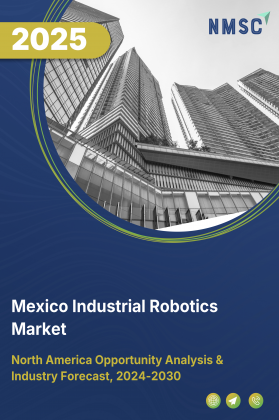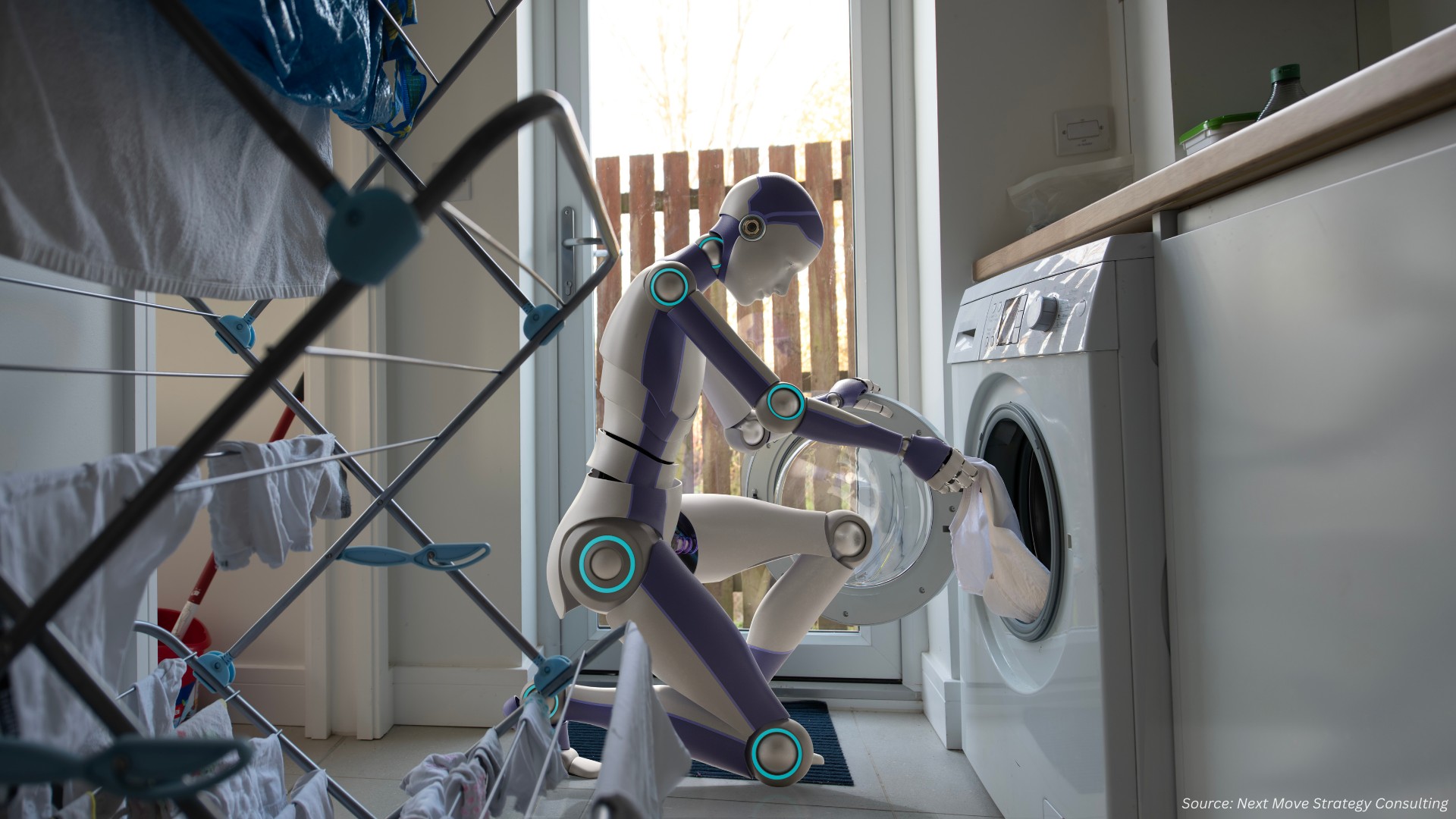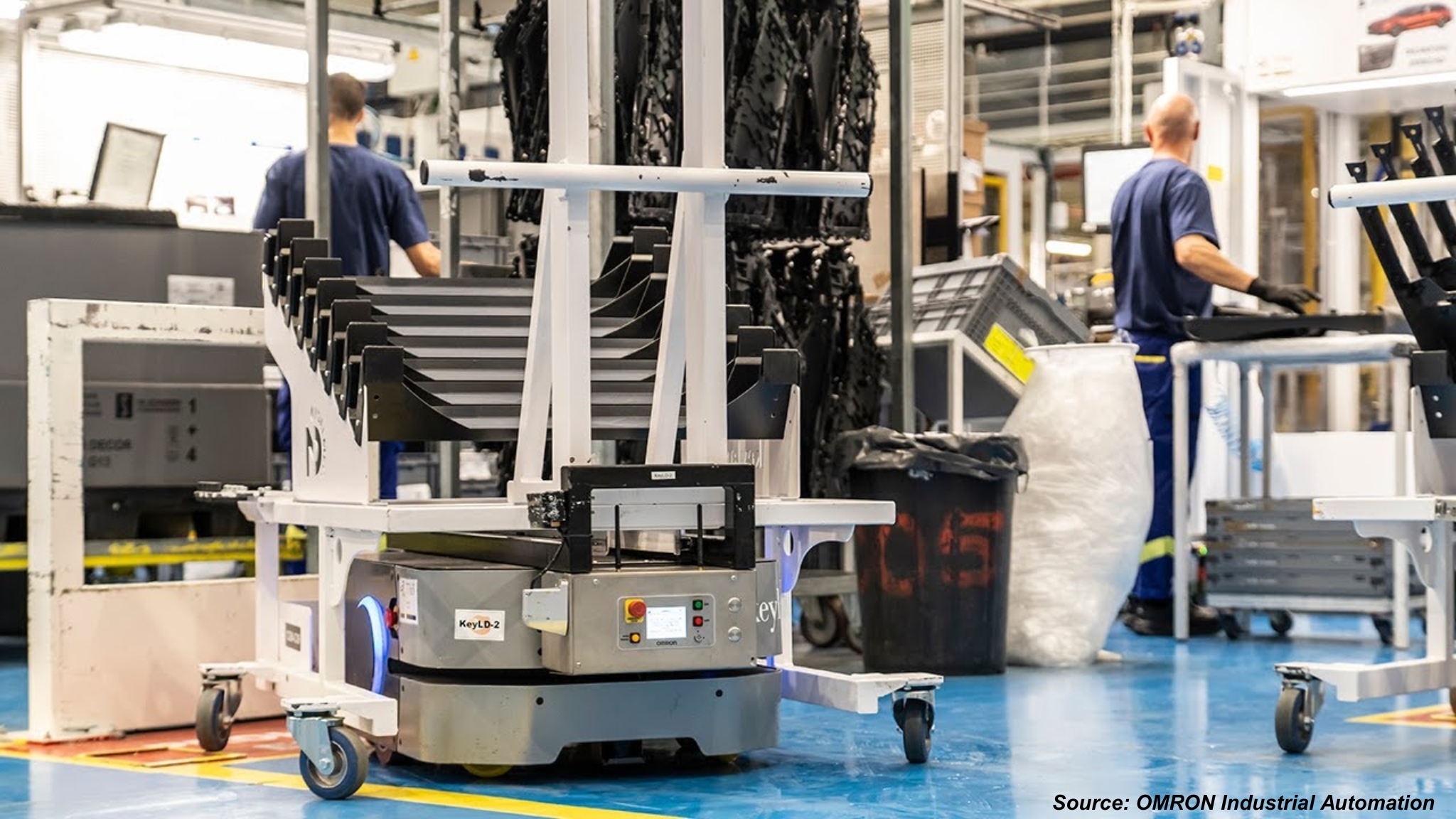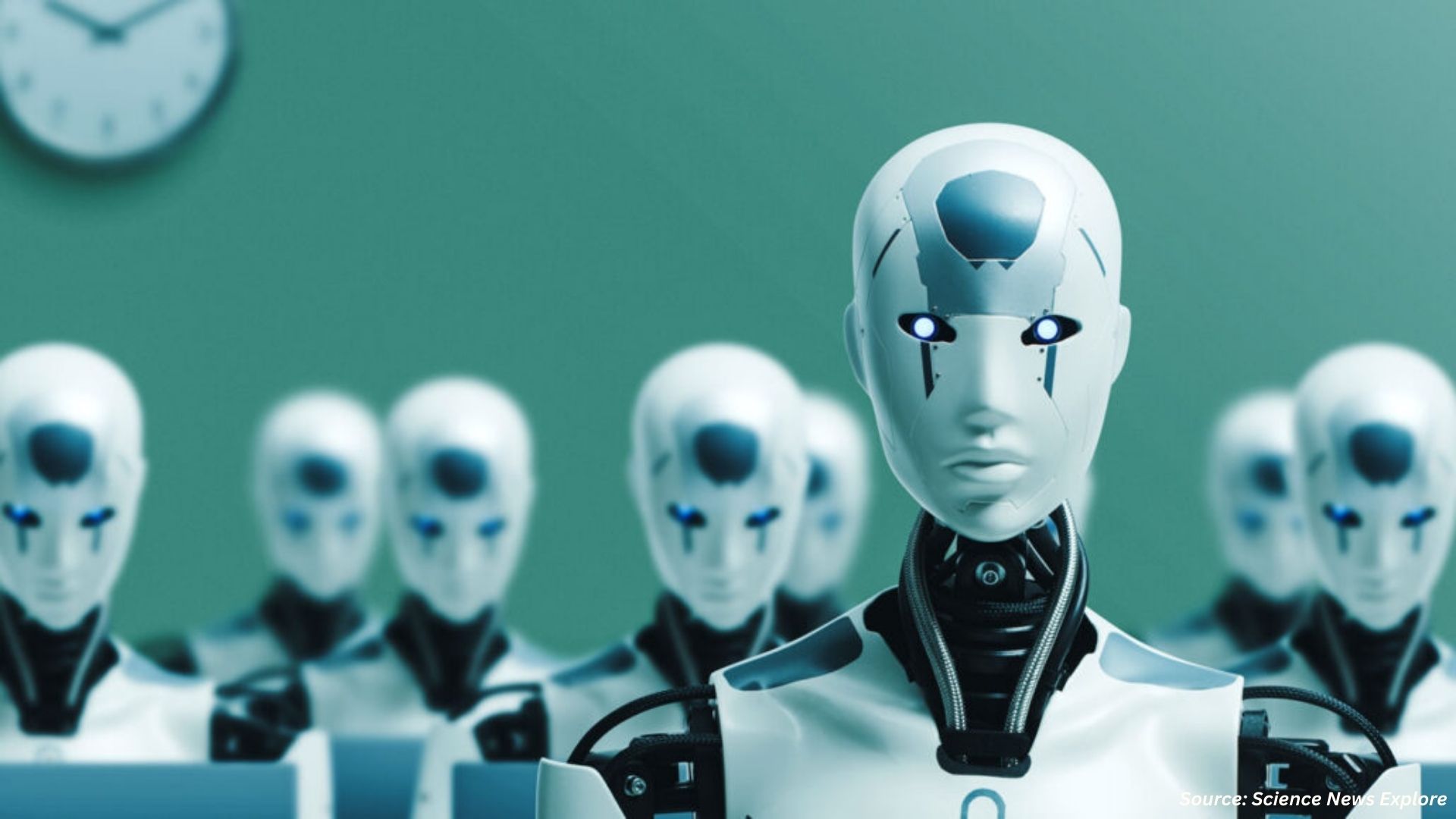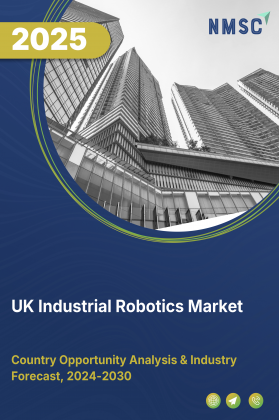
UK Industrial Robotics Market By Type (Articulated Robots, SCARA Robots, and Others), By Offering Hardware, Software, and Services), By Payload Capacity (≤ 100 KG, 101-200 KG, 201-500 KG and Others), By Mobility (Stationary, and Mobile Robots), By Mounting Type (Floor mounted, Wall-mounted, and Others), By Application (Material Handling, Assembling & Disassembling, and Others), By Industry Vertical (Automotive, and Others) – Opportunity Analysis and Industry Forecast, 2025–2030.
Industry: Semiconductor & Electronics | Publish Date: 24-Nov-2025 | No of Pages: 110 | No. of Tables: 141 | No. of Figures: 86 | Format: PDF | Report Code : SE3705
Industry Outlook
The UK Industrial Robotics Market size was valued at USD 903 million in 2024 and is expected to reach USD 1050.7 million by 2025. Looking ahead, the industry is projected to expand significantly, reaching USD 1748.9 million by 2030, registering a CAGR of 10.7% from 2025 to 2030. In terms of volume, the sector recorded 12 thousand units in 2024, with forecasts indicating growth to 15 thousand units by 2025 and further to 30 thousand units by 2030, reflecting a CAGR of 14.9% over the same period.
The industrial robotics market in UK is experiencing strong growth, driven by the rapid expansion of the manufacturing sector and increasing automation initiatives. Industrial robots are becoming essential for managing complex workflows, optimizing processes, and maintaining product quality. Vendor-led innovations from companies like ABB, Fanuc, KUKA, and Yaskawa, such as collaborative robots, autonomous mobile robots, and AI-integrated systems, are accelerating adoption and enhancing operational efficiency.
The integration of IoT technology further boosts capabilities, enabling real-time monitoring, predictive maintenance, and data-driven process optimization. However, challenges such as high upfront costs, complex customization, legacy system integration, and limited awareness among some manufacturers continue to constrain adoption. Despite these hurdles, robotics is playing a pivotal role in improving productivity, flexibility, and competitiveness across the UK’s manufacturing landscape.
Growing Adoption of Automation in Industries Boost the Market Growth
The region’s manufacturing landscape is increasingly turning toward automation to strengthen productivity, quality, and global competitiveness. As industries such as automotive, electronics, pharmaceuticals, and food processing seek to reduce production costs and improve operational efficiency, the UK industrial robotics market demand is rapidly expanding.
Robotics integration is enabling manufacturers to streamline complex processes, minimize errors, and maintain consistency in high-precision production environments. This rising focus on efficiency and advanced manufacturing practices is fueling steady market growth across UK.
Increasing Adoption of Industry 4.0 and Technological Advancements is Driving Market Trends
The UK’s growing emphasis on Industry 4.0 and digital transformation is reshaping its industrial ecosystem. The integration of robotics with artificial intelligence (AI), machine vision, cloud computing, and IoT-based systems is unlocking new levels of productivity and flexibility.
Government-backed initiatives encouraging smart factories and automation-driven innovation are further accelerating the UK industrial robotics market trends. These developments are helping manufacturers transition toward data-driven, sustainable production models, establishing robotics as a cornerstone of the country’s advanced manufacturing strategy and a major contributor to evolving market trends.
High Capital Costs is Restricting Market Expansion
Despite its technological maturity, the UK industrial robotics market expansion faces challenges due to the high upfront costs associated with robotic installations and system integration. Many small and medium-sized enterprises (SMEs), which form the backbone of UK’s manufacturing sector, remain hesitant to invest in robotics due to budget constraints and uncertainty about return on investment.
Additionally, a lack of specialized technical expertise and limited access to automation training programs further slowdown adoption. These factors collectively restrain the industry expansion, particularly among traditional manufacturing players still reliant on manual operations.
Introduction of Collaborative Robotics and Service-Based Models is Enhancing Market Demand
An emerging opportunity for the market lies in the rapid adoption of collaborative robots (cobots) and robotics-as-a-service (RaaS) business models. Cobots offer flexibility, ease of deployment, and safety features that make them ideal for smaller production facilities and high-mix, low-volume manufacturing.
Meanwhile, service-based models reduce the financial barrier by allowing companies to pay for automation as an operational expense rather than a capital investment. Together, these innovations are making robotics more accessible and affordable, creating new pathways for market expansion and fueling sustained demand across various UK industries.
Competitive Landscape
The UK industrial robotics industry is highly competitive, dominated by leading players such as ABB Ltd., Fanuc Corporation, Yaskawa Electric Corporation, Mitsubishi Electric Corporation, KUKA AG, Kawasaki Heavy Industries, Nachi-Fujikoshi Corp., Denso Wave Inc., Panasonic Corporation, Yamaha Motor Co., Ltd., Omron Corporation, Seiko Epson Corporation, Staubli International AG, Universal Robots, and Carl Cloos Schweisstechnik GmbH.
These companies are driving innovation by introducing advanced AI- and IoT-enabled robotic solutions, including collaborative robots and autonomous mobile robots. Their offerings are accelerating automation adoption across multiple UK industries, from automotive and electronics to logistics and general manufacturing, enhancing productivity, operational efficiency, and competitiveness across the country’s manufacturing landscape.
UK Industrial Robotics Market Key Segments
By Type
-
Articulated Robots
-
SCARA Robots
-
Cylindrical Robots
-
Cartesian/Linear Robots
-
Parallel Robots
-
Collaborative Robots
-
Autonomous Mobile Robots (AMRs)
-
Automated Guided Vehicles (AGVs)
-
Other Robots
By Offering
-
Hardware
-
Software
-
Robot Control Software
-
Vision & Perception Software
-
Other Software
-
-
Services
By Payload Capacity
-
≤ 100 KG
-
101-200 KG
-
201-500 KG
-
501-1000 KG
-
1001-2000 KG
-
2001-5000KG
-
More than 5000 KG
By Mobility
-
Stationary Robots
-
Mobile Robots
By Mounting Type
-
Floor-mounted
-
Wall-mounted
-
Ceiling-mounted
-
Rail-mounted
By Application
-
Material Handling
-
Assembling & Disassembling
-
Processing
-
Cleanroom
-
Dispensing
-
Welding and Soldering
-
Pick and Place
-
Others
By Industry Vertical
-
Automotive
-
Semiconductor & Electronics
-
Plastic and Chemical Products
-
Metal and Machinery
-
Logistics
-
Food & Beverages
-
Healthcare & Pharmaceutical
-
Others
Key Players
-
Yaskawa Electric Corporation
-
Mitsubishi Electric Corporation
-
KUKA AG
-
Kawasaki Heavy Industries
-
Nachi-Fujikoshi Corp.
-
Denso Wave Inc
-
Panasonic Corporation
-
Yamaha Motor Co., Ltd.
-
Omron Corporation
-
Seiko Epson Corporation
-
Staubli International AG
-
Universal Robots
-
Carl Cloos Schweisstechnik GmbH
Report Scope and Segmentation
|
Parameters |
Details |
|
Market Size in 2025 |
USD 1050.7 Million |
|
Revenue Forecast in 2030 |
USD 1748.9 Million |
|
Growth Rate |
CAGR of 10.7% from 2025 to 2030 |
|
Market Volume in 2025 |
15 thousand units |
|
Volume Forecast in 2030 |
30 thousand units |
|
Growth Rate |
CAGR of 14.9% from 2025 to 2030 |
|
Analysis Period |
2024–2030 |
|
Base Year Considered |
2024 |
|
Forecast Period |
2025–2030 |
|
Market Size Estimation |
Million (USD) |
|
Growth Factors |
|
|
Companies Profiled |
15 |
|
Market Share |
Available for 10 companies |
|
Customization Scope |
Free customization (equivalent up to 80 working hours of analysts) after purchase. Addition or alteration to country, regional, and segment scope. |
|
Pricing and Purchase Options |
Avail customized purchase options to meet your exact research needs. |

















 Speak to Our Analyst
Speak to Our Analyst





